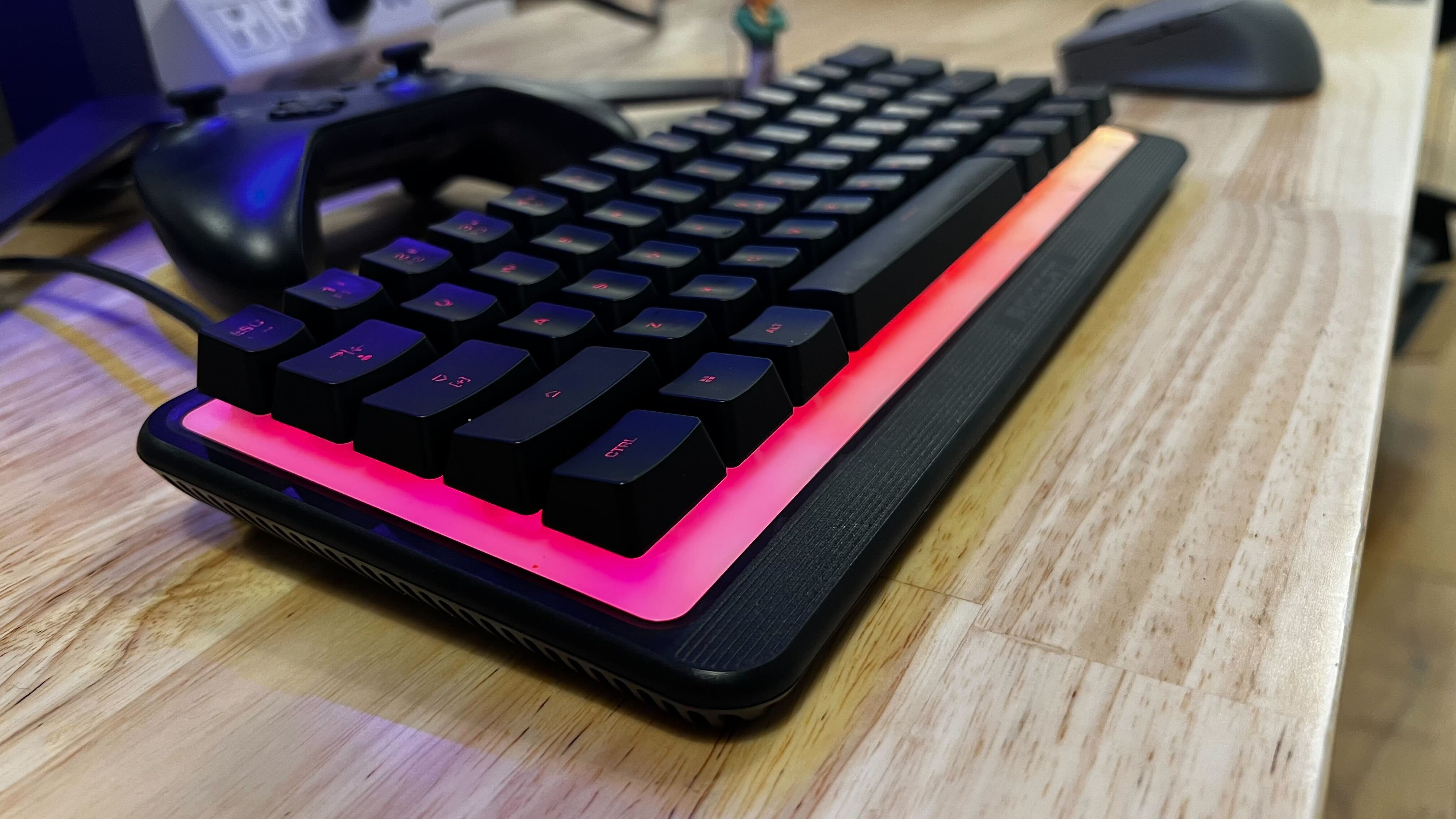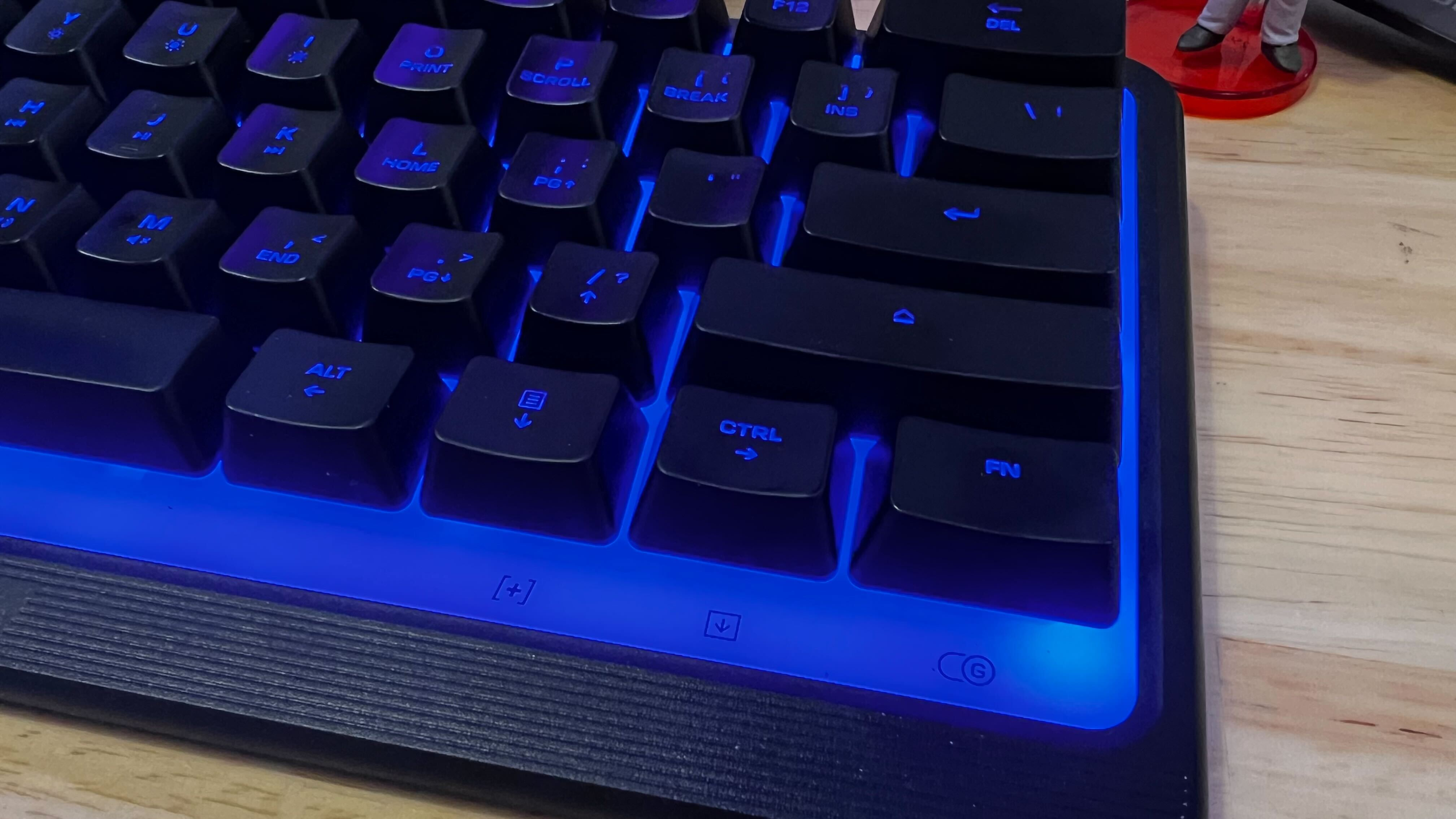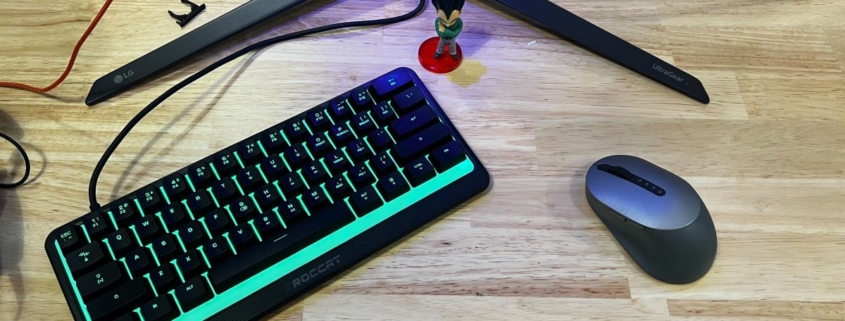Roccat Magma Mini
A budget gaming keyboard is one of the hardest peripherals to recommend to a PC gamer. Too often, to cut costs, manufacturers will strip out vital features or use inferior materials resulting in a plastic-feeling, sad excuse of a keyboard they’d hope you’d buy because it’s cheap. Roccat is looking to change the stigma of what a budget keyboard is supposed to look and feel like with the Magma Mini.
The Magma Mini is basically Roccat’s Magma (opens in new tab) full-sized membrane keyboard with everything right of the Enter key sliced off. Its compact design is for gamers who only have a little desk space or simply want more room for bigger, intense mouse sweeps when gaming.
It has all the same features as its bigger sibling: quiet membrane keys, anti-ghosting tech, and flashy RGB lighting. Another place it shares a similarity is pricing. The Magma sells for $60 (though we’ve seen it on sale for $40 (opens in new tab) in recent weeks), while the Magma Mini retails for a surprising $50. I say surprisingly because I initially thought this 60% keyboard would MSRP for at least $80 based on appearance.
Another reason you might want to go with a compact keyboard is the ergonomics. The smaller size allows you to position the keyboard in a way that’s most comfortable for you. For gaming, having your hands closer between the mouse and WASD keys gives you a better ergonomic posture. I’ve known competitive gamers who solely use a tiny keyboard for shooters and a full-size keyboard for work or chatting. Not a bad idea, though it could lead to a very cluttered desk.
Roccat Magma Mini specs
Switch: Membrane
Connectivity: USB 3.1 Type-A
Size: 60%
Polling rate: 1,000Hz
Backlights: 5 zones RGB
Passthroughs: No
Features: Anti-ghosting, spill and dustproof (IP33)
Media controls: Pause/play, skip forward/back, mute, horizontal volume wheel
Macro keys: 4
Wrist rest: EasyShift[+]
Weight: 460g
RRP: $49.99 (opens in new tab) £54.38 (opens in new tab)
The Magma Mini is a membrane keyboard that will take some getting used to if you’re moving from a mechanical keyboard. The biggest difference is keystrokes are quieter and feel more spongy, so you won’t get that satisfying clickety-clack that comes with some of the best gaming keyboards (opens in new tab).
What I didn’t realize until my toddler knocked over an entire can of Red Bull on it, was that the keyboard is spill and dustproof. So the Magma Mini might be a good candidate if you need a keyboard for a young and messy gamer.
At home, I type a modest 85 words per minute on my wireless Logitech G915 TKL (opens in new tab). On the Magma Mini, I scored 76 WPM on a typing test (opens in new tab) which is pretty good considering it’s been a while since I’ve done a significant amount of typing on a membrane keyboard. I won’t be a member of the Membrane Mob anytime soon, but I could complete my work by typing this review without too many mistakes.
Using this thing for gaming, it’s not too big of a deal. Like other 60 percenters, the arrow keys are accessible using the function key. However, the Magma requires an extra step if you want to use the arrows. You have to hold down the FN key, left shift, and arrow key, making arrow movement the primary function when you use the keys.
So, whenever I use the keys, I need to hold down FN and the arrow key I want. It’s strange because it’s not quite clear in the instructions on how to do that, so thankfully, Roccat was able to clear that up for me. The arrows are located on the lower right of the keyboard on the left of the right shift key. They are a little easier to reach with my right hand than when they are located on the J, K, L, and I keys, as on some other 60 percenters.
Keyboards this small are always a pain if you use them for work, so just typing and editing anything long, like an email (or a keyboard review), feels like it takes a little more time than usual since I have to occasionally stop to hunt down a function key to Page Up or Down. Again, if you’re used to working on a 65% or 60%, you know the struggle of knowing it’s a small price to pay for choosing the compact keyboard lifestyle. 
Its 1000Hz polling should be fine for most keyboard and mouse users for gaming; for more hardcore competitive gamers, they might opt for a higher one, like one of those fancy 8000Hz gaming keyboards (such as the Corsair K100 RGB (opens in new tab), which is not cheap). However, it’s debatable whether anything higher than 1,000Hz on a keyboard is much of a difference in performance than on a gaming mouse.
The Mini works well for moving around in first-person shooters. I’ve been trying Marauders, a new extraction shooter like Tarkov in space, and had no issue getting into heated gunfights peeking past crates for the perfect shot.
The striking RGB illumination of the keyboard is backlit across five zones and all controlled on the board itself, which is nice. There isn’t much customization other than turning the lights on or off unless you install AIMO, Roccat’s software that handles all the RGB lighting across all their products.
The Magma Mini’s biggest selling point is still that competitive $50 price point. My favorite 60%, the HyperX Mini X Ducky One 2 collab (opens in new tab), sells for about $99, though that’s a mechanical keyboard. And that’s the thing; the Mini doesn’t feel or look like a budget keyboard.
There are budget mechanical keyboards available for this price, though, and that’s something to consider before you’re swayed by the RGB pretties in the marketing images for the Magma Mini. G.Skill’s KM360 (opens in new tab) is a compact tenkeyless mechanical keyboard that uses genuine Cherry MX Red switches, so it’s not like you have to settle for membrane simply because of the price.
If you’re on a budget and don’t mind typing on a membrane keyboard, or in fact, if you prefer it, the Roccat Magma Mini is not only a good keyboard but a good budget keyboard that can take a bit of a beating. And at $50, I think it’s worth a shot, especially if you’re in the market for a teeny-weeny keyboard.




